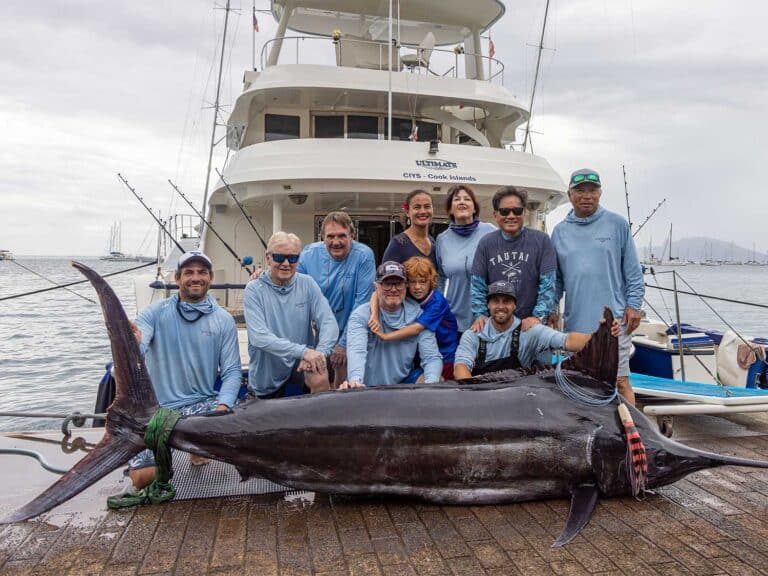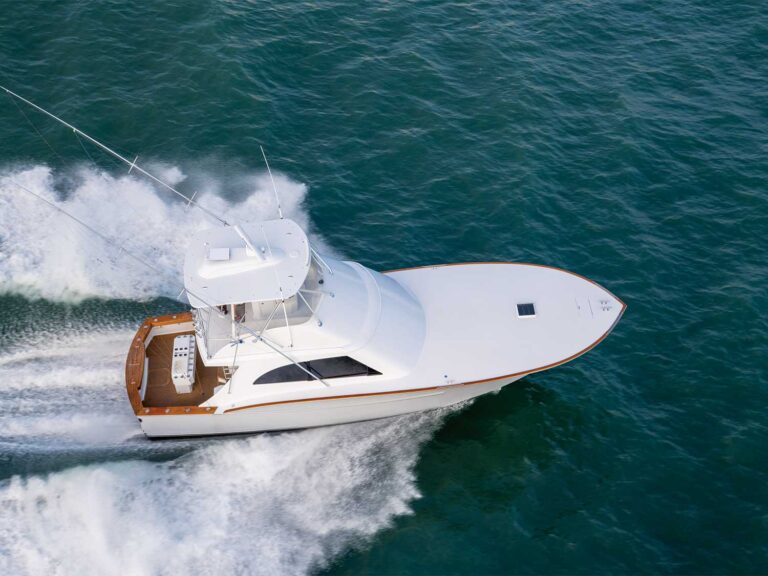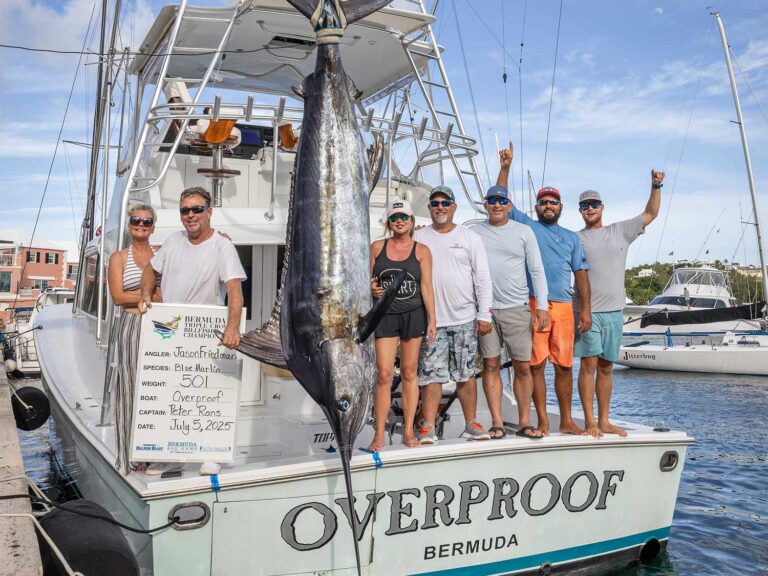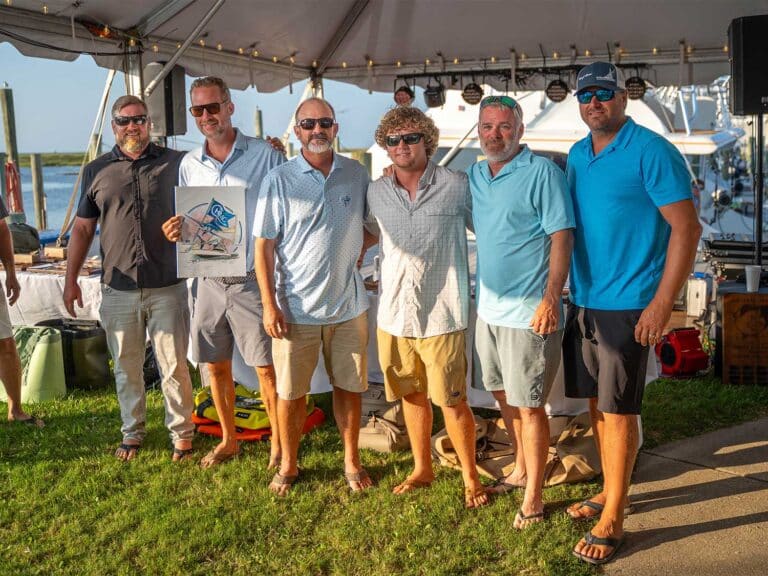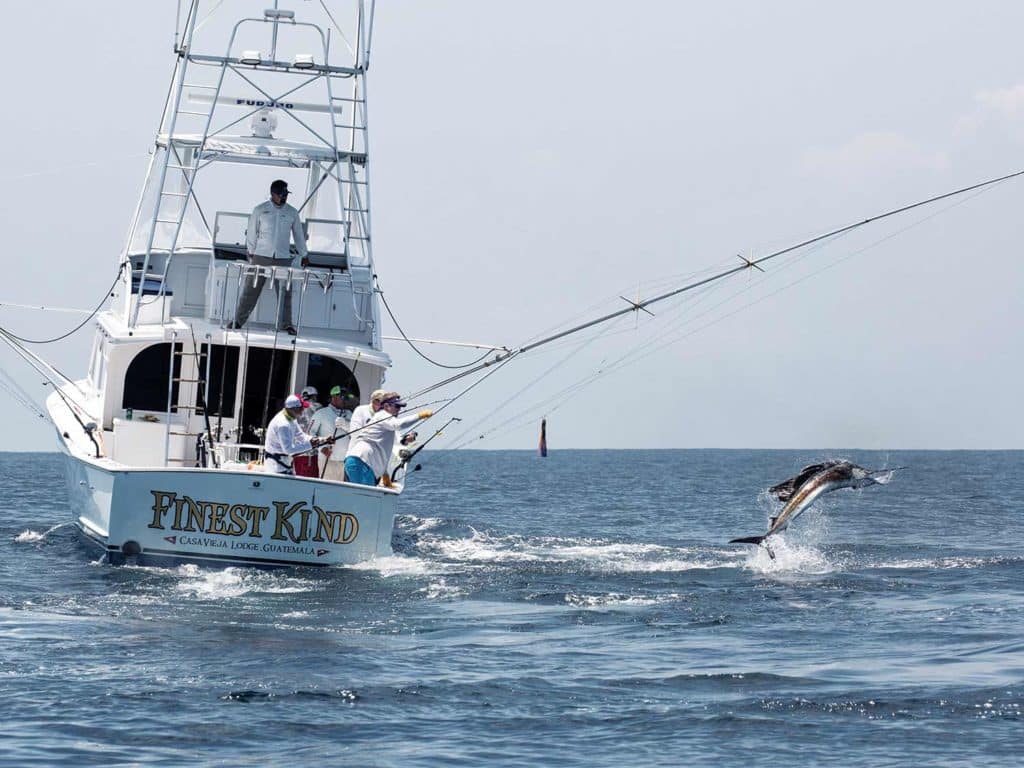
The first day of our 2019 Marlin University session in Guatemala was proof that you can never overestimate the skill level of any angler. On the ride out to the fishing grounds, I talked about past experiences with the three students I had for the day aboard Finest Kind, a 40-foot Whiticar. Each of them said they had done this kind of fishing before, so I dived right into the basics of dead-bait fishing.
The guys whiffed a couple of cheap shots on the rigger baits, then we finally came tight on a beautiful pitch-bait bite off the right short teaser. As the rod bent over and a lit-up sailfish erupted from the calm Pacific, I offered a silent word of thanks to the fishing gods and scanned for another sail in the spread when the 30-pound-test line suddenly broke with a hearty crack as the fish jumped again.
“Wow, that’s unusual,” I thought.
The angler had gone from strike to full drag, nearly ripping the rod from his hands in the process. I asked him why he’d done that, and he replied, “That’s how we fish for dolphin on my buddy’s boat in the Keys: We troll in strike and go to full drag to fight the fish.” Oops.
For rest of the trip, he was known as Full-Drag Phil, but it was all in good fun. By the end of the first day, he was hooking and fighting his own fish with the correct drag settings, and all the guys were in the groove and having a blast.
Get the Bites
World-class anglers aren’t born that way. It takes years of dedication and lots of practice to get really good at it. No two bites are the same, and to consistently hook as many fish as possible, you have to get the shots. This is true no matter where you live or what you fish for—experience pays off—and the more time you can spend on the water, the more chances you’ll have and the better you’ll get.
And it always helps to follow Rule No. 1: Fish where the fish are. It’s a well-used analogy, but imagine if you were learning to play golf, and you’re only allowed to hit a dozen balls on the driving range every year. That last one flies straight and true, but if you have to wait another year to swing the club again, it’s a lot harder to improve the mechanics of your swing. It’s the same with fishing: To become a proficient angler, you need to get the billfish bites in order to learn what to do—and perhaps more importantly, what not to do—when the spray is flying and your adrenaline is redlining.
Guatemala is just one of many fishy destinations that remains consistent, decade after decade. It’s entirely possible that you’ll see more billfish in a week than you could in an entire season at home, and that kind of hands-on practice is invaluable in the quest to become better in the cockpit. And while there are many other charter operations in Guatemala, I believe Casa Vieja Lodge is among the best.
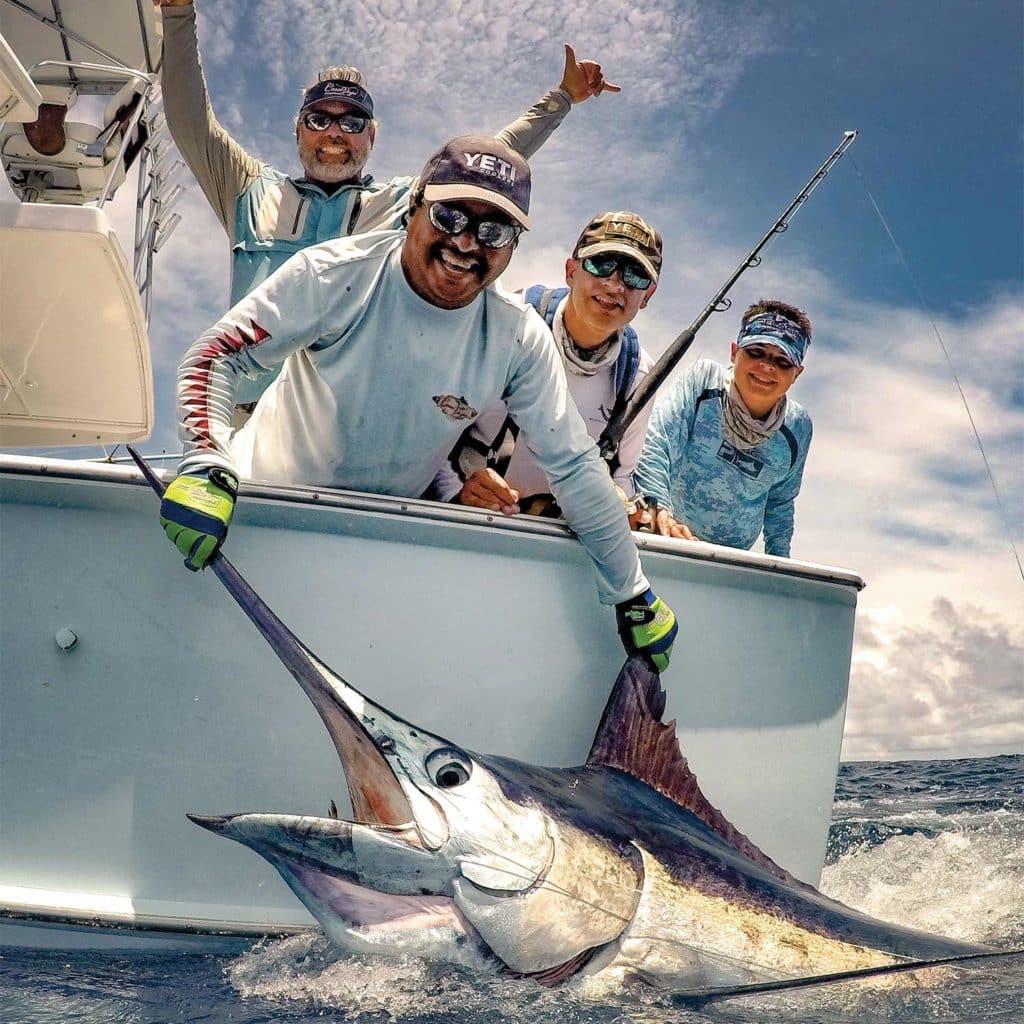
The Early Days
An American named Tim Choate first put Guatemala on the map as a fishing destination in the early 1990s. On his exploratory trips, he found an area off the nation’s only commercial port—Puerto San Jose—that featured a pocket of deep water just offshore. A seemingly never-ending wave of sailfish rode the currents in and out of the Pocket, anywhere from 5 to 50 miles offshore, and the action was intoxicating. His Fins and Feathers Lodge set records for many years: most billfish in a season, most in a single day, most on fly. Incredible.
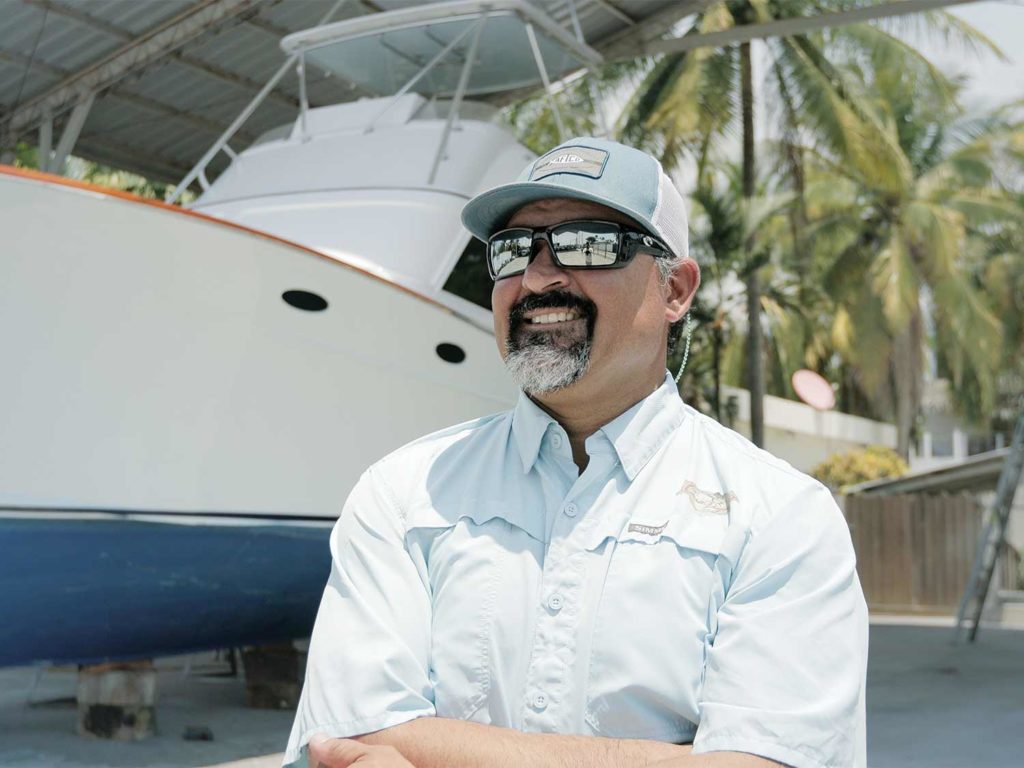
Capt. David Salazar appeared on the scene October 1998 to run a 38-foot Topaz called Yellowfin for Choate, also delivering a 38 Norseman, Man-O-War, from the United States to join the fleet. When Fins and Feathers closed a few years later, he opened a mini lodge in Guatemala, then helped build Casa Vieja Lodge with the previous owner. In 2013, he and his wife, Kristen, took ownership of the lodge and revamped the entire program. Their ongoing goal is to develop and maintain Casa Vieja’s reputation as a five-star fishing destination.
“When we took over the lodge, there were 35 or 40 employees. That’s doubled since then,” Kristen Salazar says. “We’ve gone from 550 to 600 anglers per year to an average of 1,800 a year now—and we’ve expanded from a season lasting only about three and a half months to nine months, so we’re also able to keep a full-time staff with us year-round.”
When asked why the fishing was so consistent, David replied: “One reason is that there are two equatorial currents in this part of Central America: one off Costa Rica and one off Guatemala. This one comes in as close as 8 or 10 miles offshore, while the one in Costa Rica is 40 to 50 miles off. The current always seems to hold fish. Plus, we have a conservation law in place where you aren’t allowed to kill any billfish, and far fewer longliners than in other places. There is only one small marina for them here, so there’s literally nowhere for them to dock their boats. The ones that are here are only the small outboard pangas and artisanal longliners that catch fish for the local market.”
Another key factor is having a cadre of highly experienced captains on the water. David Salazar and Jason Brice have been in Guatemala since the Fins and Feathers days; Chico and Nicho Alvarenga were David’s mates when he first arrived over 20 years ago; now each runs his own boat at the lodge. Nico Melendrez is one of the most tenured deckhands in the world, and now also captains a boat. It’s the same story with Benji Bairez and the others, who are raising their sons as the next generation of mates. And when you’re handling anywhere from 1,500 to 2,000 billfish a year, experience comes quickly.
The captains also work together, formulating a game plan for the day before they leave the dock and staying in constant communication on the water. This is true for every captain fishing out of Puerto San Jose, even those working for different lodges. Every release and every marlin raise or bite is put on the air along with the GPS numbers.
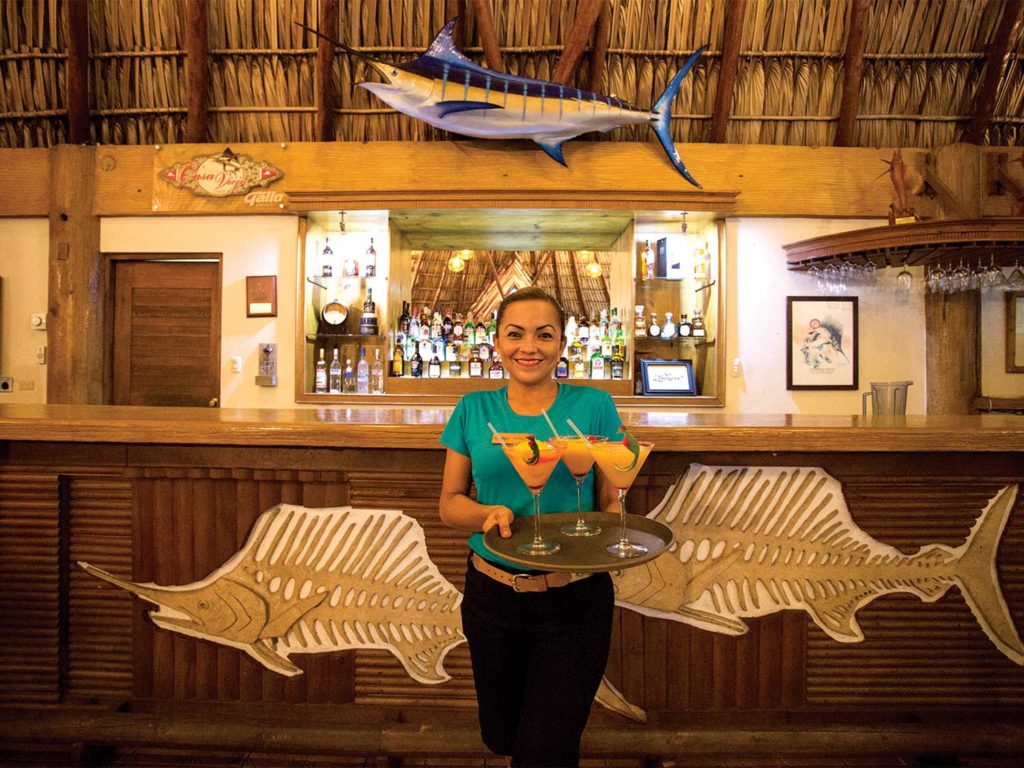
“We all want the clients to have a great experience fishing in Guatemala,” David says, “even if it’s with another lodge. If we’re all catching fish, then everyone’s happy.”
A third is the perceived seasonality of the fishery. “People have always heard it’s only good in the wintertime,” David says. “But we can post good numbers on any given day. Even in June, July and August, it’s still consistently good. The rainy season in our part of Guatemala is from mid-July through the end of September—but it’s more like Florida rain that comes and goes, not the torrential downpours that last all day like you find in Costa Rica and Panama.”
He shares a story of a memorable Labor Day weekend when he fished with one longtime angler with two teasers and one bait in the water: They caught 45 sails and were back in the lodge’s pool by 2 p.m.
During our stretch of fishing for the 2019 Marlin University session in early June, the boats averaged eight to 15 sailfish bites a day, and several also had multiple blue marlin releases—one boat saw five and released two blues from four bites. The big schools of yellowfin tuna on spinner dolphins and excellent gaffer mahi fishing were just a bonus. On our last day, the winner of our four-boat mini tournament had 10 sailfish releases—not bad for June. The lodge closes in September for annual maintenance, which coincides with the height of the rainy season, but by mid-October, the boats are back in the water, and the crews are ready to get after it again.
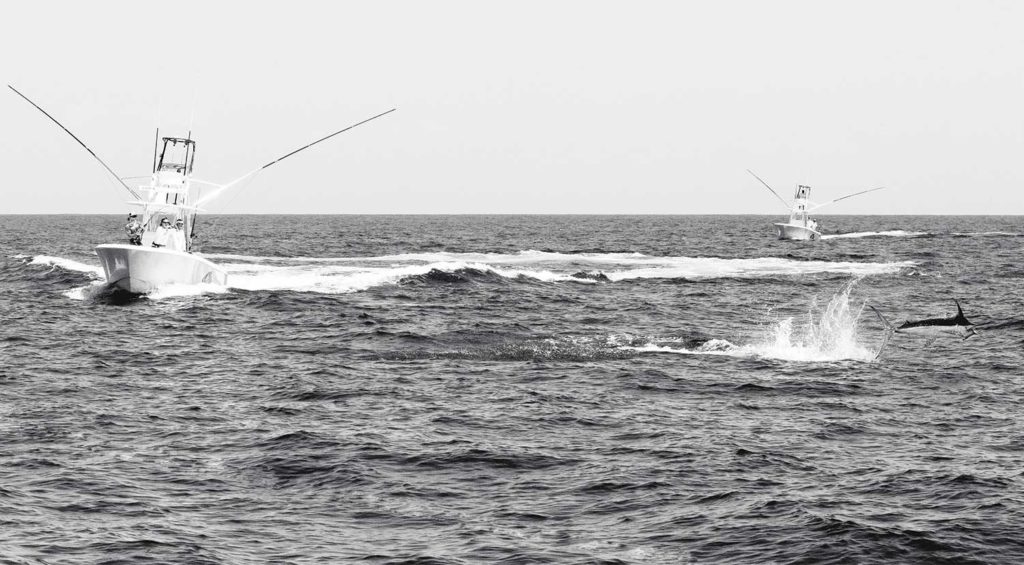
The Center-Console Connection
In the fall of 2014, the Salazars purchased a pair of new 35-foot Contender STs and delivered them by water from South Florida to Guatemala. They made the decision to add the center-consoles to their fleet based on the growing popularity of this style of boat in the United States and elsewhere in the world. Anglers could learn to pull teasers and bait-and-switch for billfish from a center-console.
“We’ve equipped these boats to be just as effective as the bigger ones for our style of fishing,” David says. “The captain has a good view from the tower, and the anglers can fight multiple hookups all the way around the boat. They also have the added benefit of speed: The Contenders usually get another hour to an hour and a half more fishing time each day because they’re fast.”
Capt. Chris Sheeder sets the blue marlin release record for Guatemala on this memorable day.
Making Bait
The logistics of running a fishing lodge in Central America are challenging but not insurmountable.
Take bait, for example. Having a steady supply of ballyhoo is critical—a charter boat running out of bait is like a bank running out of money. Do the math: If you have nine boats fishing and each is getting 30 bites a day, that’s 270 ballyhoo, not counting what you’ll need to replace washouts and teaser baits. A conservative guess is 2,500 ballyhoo a week. Importing bait is prohibitively expensive, so the solution is to catch it yourself.
Capt. Nico Melendrez’s wife, Manuela, heads the lodge’s bait-catching operation. She ventures out with a few others at night in outboard-powered pangas equipped with generators and floodlights; once they locate the bait, anywhere from 5 to 40 miles offshore, they catch them in cast nets and brine them immediately in large storage tanks. Once back on shore, the bait goes through a commercial vacuum-bagging process, then is blast-frozen.
“We can only catch bait in the rainy season,” David says, “which is another reason the fish are here pretty much year-round. We will put up around 80,000 to 85,000 ballyhoo every year. It’s a lot of effort behind the scenes that not many people think about, but it’s critical to the overall operation.”
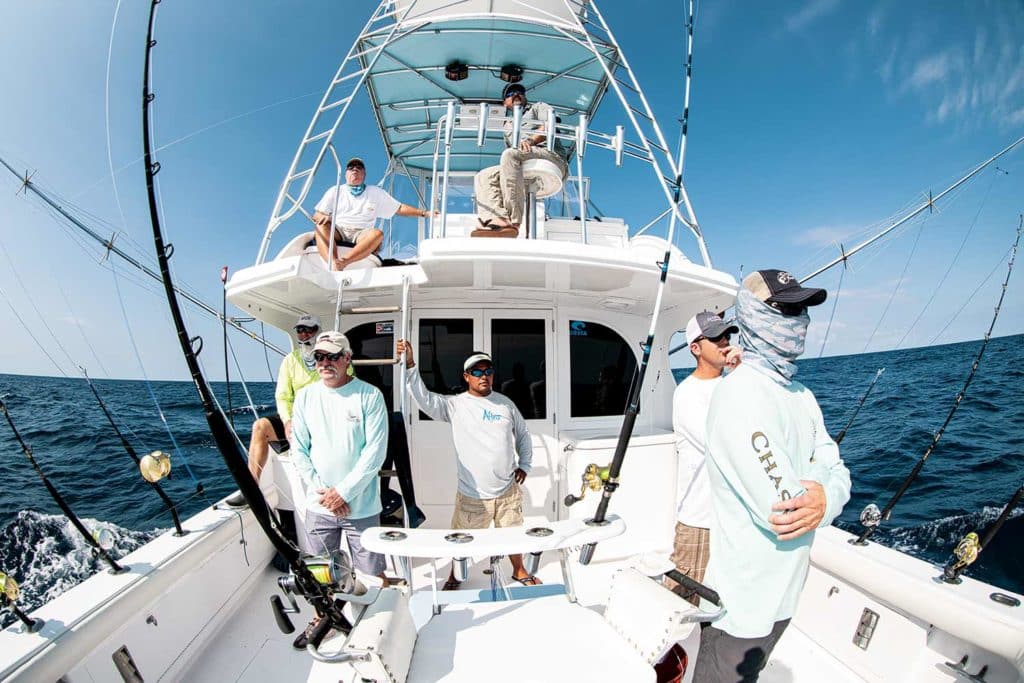
Kicking the Plastic Habit
Even supplying fresh drinking water to the lodge’s boats is a consideration.
“A few years ago, we thought it was cool to have the lodge’s name and logo on our plastic water bottles,” Kristen says, “but then we started seeing those bottles on the ground at the marina and floating in the water, and realized it wasn’t cool at all.”
So the lodge developed a unique solution. As part of the Kick Plastic program pioneered by Costa, and in partnership with Yeti, the lodge installed two water-purification stations. Each guest receives a personalized 18-ounce Yeti water bottle upon arrival, refilling them at the stations, and each boat carries a 5-gallon Yeti silo as well. I was a little skeptical about how well this would work, but after seeing it in practice, I’m a believer.
“This was our first full season with this program, and we estimate that we’ve saved about 65,000 plastic water bottles,” Kristen says. “It’s been very successful—other lodges have been asking us how they can do the same thing, so it has a real chance to change the way we think about single-use plastics.”
Spring Training
Because of the prolific nature of the fishery, the lodge is also a perfect destination for Marlin University, which is a program designed to teach anglers of all skill levels how to become better at the sport. Casa Vieja has hosted Marlin U every year, and is definitely a favorite for those who return to the program annually.
The No Sancocho tournament is another fun annual event at Casa Vieja. Each missed bite nets the angler a $20 fine; the funds raised are donated to a local school, where many of the lodge’s captains and employees send their kids.
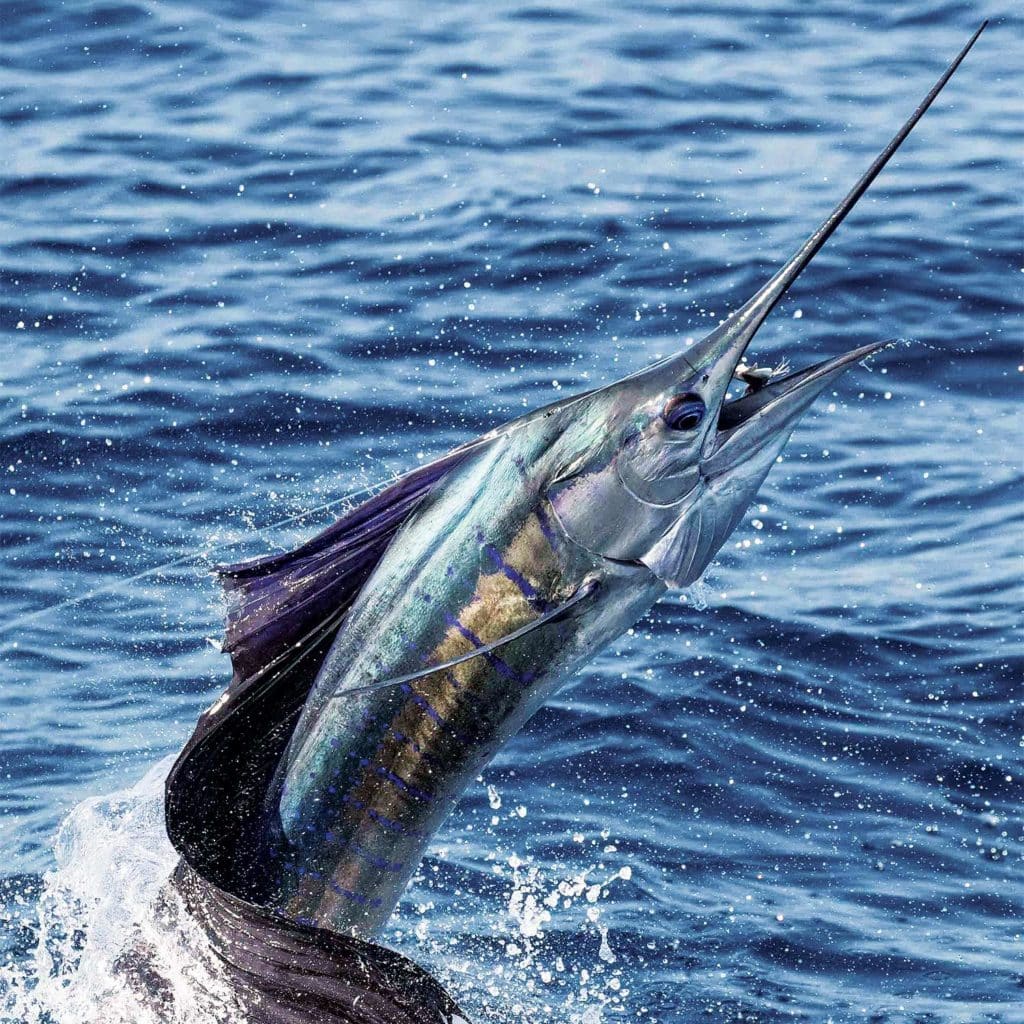
“One of my original clients named Hill Dishman started the No Sancocho back in the Fins and Feathers days,” David says. “It carried over to Casa Vieja for a few years before it was dropped by the prior owner, but we brought it back in 2015, and it’s been going strong ever since.”
From the afternoon water-balloon fights to the wide-open bar antics, this is one event not to be missed if you’re looking for a really good time.
Considering a trip to Guatemala as a tune-up before tournament season gets underway won’t leave you disappointed. You’ll have a chance to shake off the cobwebs from the previous winter while fine-tuning your dead-bait technique. So when that big-money billfish decides to blast a teaser back at home, the butterflies in your stomach are replaced by sheer muscle memory—you’re dropping back in perfect free-spool before you even have time to think about it.
Several of the top international tournament teams are making this a part of their annual programs, and others bring their kids as a way to introduce them to billfishing in a faster-paced environment they don’t find at home. Either way, it’s tough to beat a week fishing in one of the world’s top fisheries: Guatemala.
Meet the Fleet
Poco Loco, 46-foot Kincheloe Nickerson Capt. David Salazar
- Rum Line, 40-foot Gamefisherman, Capt. Terry Brennan
- Finest Kind, 40-foot Whiticar, Capt. Nicho Alvarenga
- A-Fin-Ity, 39-foot Knowles, Capt. Nico Melendrez
- Makaira, 37-foot Rybovich, Capt. Jason Brice
- Release, 37-foot Merritt, Capt. Chico Alvarenga
- Spindrift, 38-foot Stolper, Capt. Efrain Rizzo
- El Cadejo, 35-foot Contender, Capt. Benji Bairez
- Pez Raton, 35-foot Contender, Capt. Franz Hoffman
Back to School
Marlin University offers anglers a chance to fish in some of the world’s best billfish destinations, gaining real-world on-the-water experiences alongside expert instructors. Each trip culminates in a one-day mini tournament.
- February 4-9, Los Sueños, Costa Rica
- March 4-8, Los Sueños, Costa Rica (Ladies Only)
- May 31-June 5, Casa Vieja Lodge, Guatemala
- November 8-14, Great Barrier Reef, Australia




